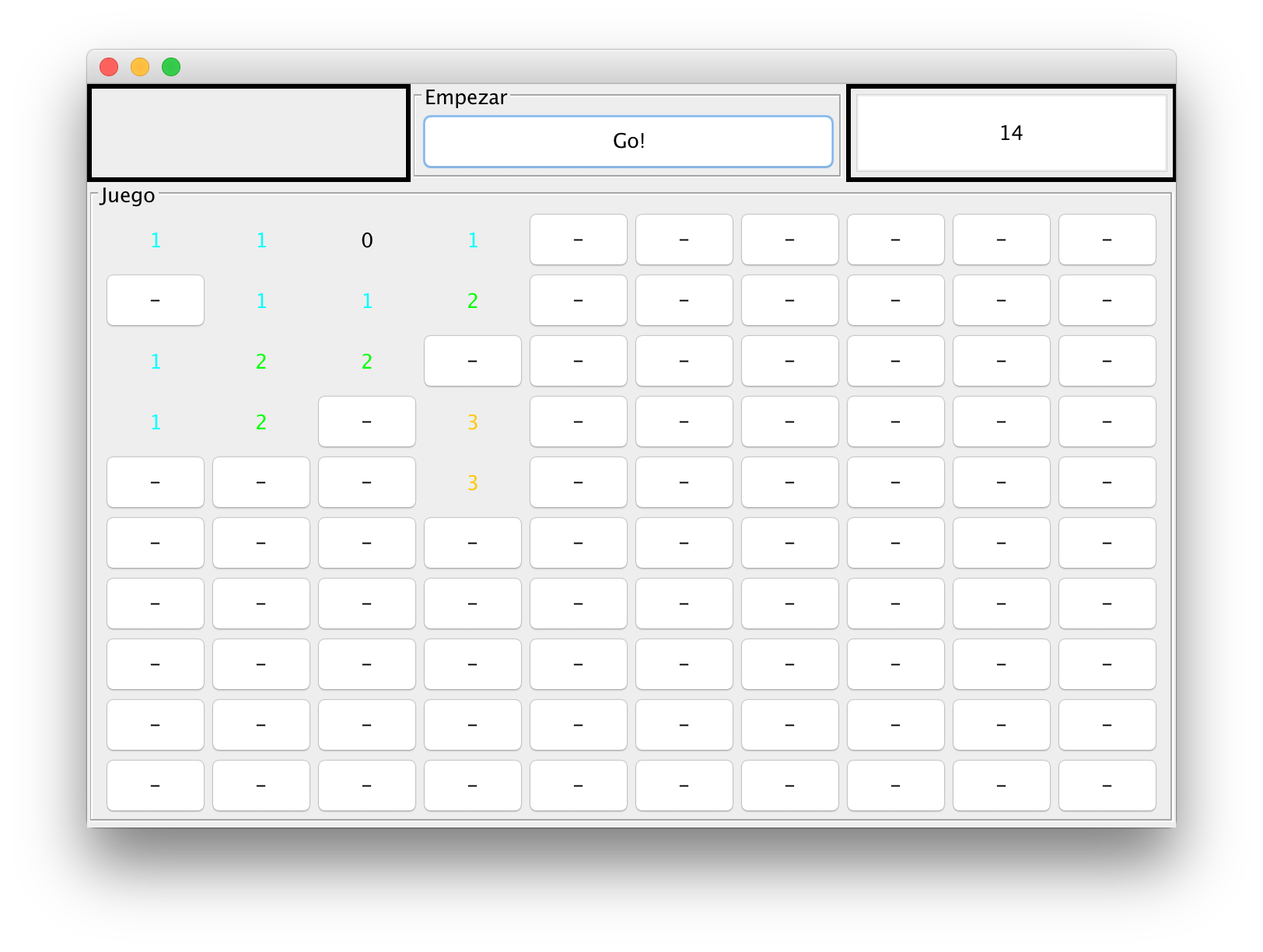MineSeeker [DI]
After seeying the main components in the Swing library it was time to develop a full project. Moreover it was a perfect opportunity to learn the very basics of git. So I prepared these slides and a base project in github.
The base project used 2 classes to detach the logic from the visuals. The MVC is not 100% used because the View acts as controller (listerners). The model is 100% detached, but it is not observable.
The base project & documentation can be found clicking in the following image:
The controller was represented by:
private final static int MINA = -1;
final int MINAS_INICIALES = 20;
final int LADO_TABLERO = 10;
private int [][] tablero;
private int puntuacion;
To initialitlice the board it was necessary to place MINAS_INICIALESmines in the tablero(board):
/**Método para generar un nuevo tablero de partida:
* @pre: La estructura del tablero debe existir
* @post: Al final el tablero se habrá inicializado con tantas minas como marque la variable MINAS_INICIALES.
* El resto de posiciones que no son minas guardan en el entero cuántas minas hay alrededor de la celda
*/
public void inicializarPartida(){
//Borro del tablero la información que pudiera haber anteriormente (los pongo todos a cero):
for (int i = 0; i < tablero.length; i++) {
for (int j = 0; j < tablero[i].length; j++) {
tablero[i][j] = 0;
}
}
//Me creo LADO_TABLERO*LADO_TABLERO números en un array list, uno para cada una de las posiciones del tablero:
ArrayList<Integer> posicionesMina = new ArrayList<Integer>();
for (int i = 0; i < (LADO_TABLERO*LADO_TABLERO); i++) {
posicionesMina.add(i);
}
//Saco 20 posiciones sin repetir del array y les coloco una mina en el tablero:
Random rd = new Random();
for (int i = 0; i < MINAS_INICIALES; i++) {
int iPosElegida = rd.nextInt(posicionesMina.size());
int posElegida = posicionesMina.get(iPosElegida);
posicionesMina.remove(iPosElegida);
//Meto una mina en esa posición:
tablero[posElegida/LADO_TABLERO][posElegida%LADO_TABLERO] = MINA;
}
//Calculo para todas las posiciones que no tienen minas, cuántas minas hay alrededor.
for (int i = 0; i < tablero.length; i++) {
for (int j = 0; j < tablero[i].length; j++) {
if (tablero[i][j] != MINA){
tablero[i][j] = calculoMinasAdjuntas(i,j);
}
}
}
//Pongo la puntuación a cero:
puntuacion = 0;
}
They had some problems with the logic of the game. Especially the chunks in which they had to figure out how many mines there were around a cell:
/**Cálculo de las minas adjuntas:
* Para calcular el número de minas tenemos que tener en cuenta que no nos salimos nunca del tablero.
* Por lo tanto, como mucho la i y la j valdrán LADO_TABLERO-1.
* Por lo tanto, como mucho la i y la j valdrán como poco 0.
* @param i: posición verticalmente de la casilla a rellenar
* @param j: posición horizontalmente de la casilla a rellenar
* @return : El número de minas que hay alrededor de la casilla [i][j]
*/
private int calculoMinasAdjuntas(int i, int j){
int iInicial = Math.max(0, i-1) ;
int iFinal = Math.min(LADO_TABLERO-1, i+1);
int jInicial = Math.max(0, j-1);
int jFinal = Math.min(LADO_TABLERO-1, j+1);
int acumuladorMinas = 0;
for (int indI = iInicial; indI <= iFinal; indI++) {
for (int indJ = jInicial; indJ <= jFinal; indJ++) {
if(tablero[indI][indJ] == MINA){
acumuladorMinas++;
}
}
}
return acumuladorMinas;
}
